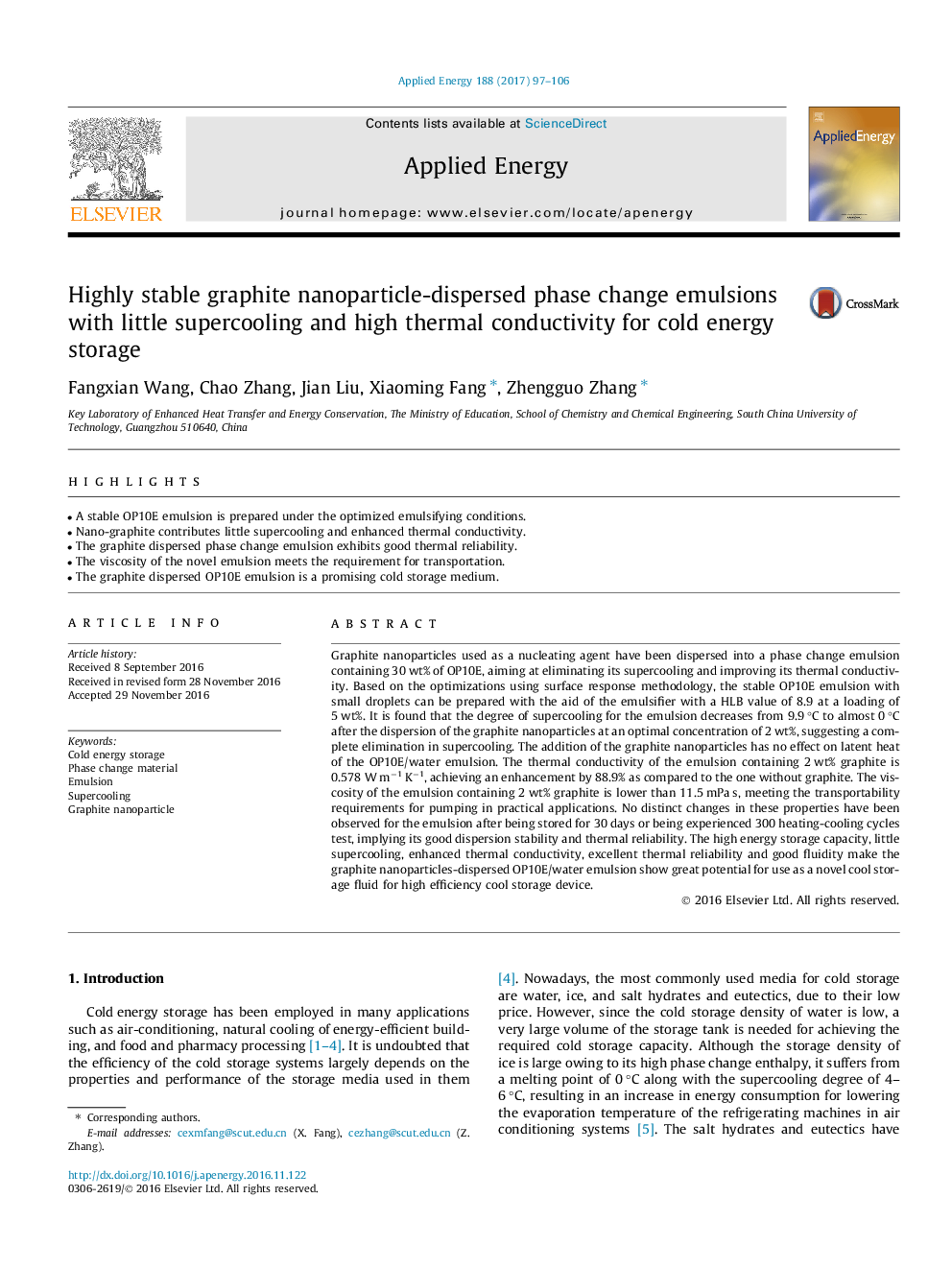| Article ID | Journal | Published Year | Pages | File Type |
|---|---|---|---|---|
| 4911119 | Applied Energy | 2017 | 10 Pages |
Abstract
Graphite nanoparticles used as a nucleating agent have been dispersed into a phase change emulsion containing 30 wt% of OP10E, aiming at eliminating its supercooling and improving its thermal conductivity. Based on the optimizations using surface response methodology, the stable OP10E emulsion with small droplets can be prepared with the aid of the emulsifier with a HLB value of 8.9 at a loading of 5 wt%. It is found that the degree of supercooling for the emulsion decreases from 9.9 °C to almost 0 °C after the dispersion of the graphite nanoparticles at an optimal concentration of 2 wt%, suggesting a complete elimination in supercooling. The addition of the graphite nanoparticles has no effect on latent heat of the OP10E/water emulsion. The thermal conductivity of the emulsion containing 2 wt% graphite is 0.578 W mâ1 Kâ1, achieving an enhancement by 88.9% as compared to the one without graphite. The viscosity of the emulsion containing 2 wt% graphite is lower than 11.5 mPa s, meeting the transportability requirements for pumping in practical applications. No distinct changes in these properties have been observed for the emulsion after being stored for 30 days or being experienced 300 heating-cooling cycles test, implying its good dispersion stability and thermal reliability. The high energy storage capacity, little supercooling, enhanced thermal conductivity, excellent thermal reliability and good fluidity make the graphite nanoparticles-dispersed OP10E/water emulsion show great potential for use as a novel cool storage fluid for high efficiency cool storage device.
Related Topics
Physical Sciences and Engineering
Energy
Energy Engineering and Power Technology
Authors
Fangxian Wang, Chao Zhang, Jian Liu, Xiaoming Fang, Zhengguo Zhang,
